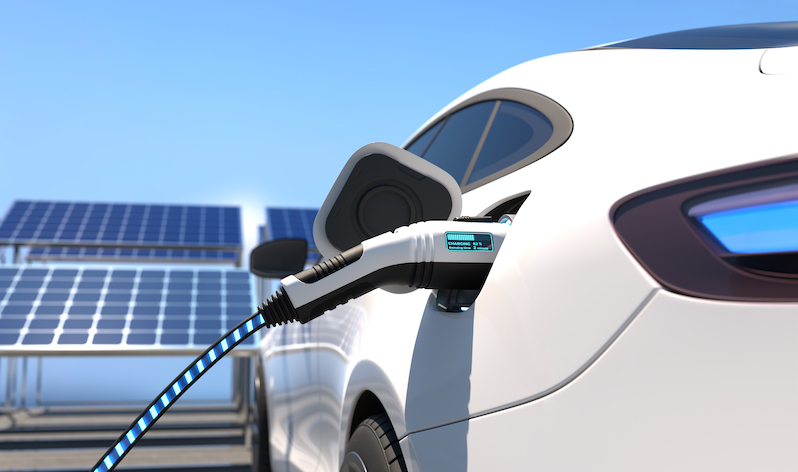
Experts discuss the increased regulatory requirements surrounding electric vehicles.
With concern over climate change on the rise, the transportation sector faces revolutionary changes.
In the United States, the transportation sector generates 27 percent of all greenhouse gas emissions, more than any other economic sector. Greenhouse gas emissions contribute to climate change by trapping heat in the earth’s atmosphere. Current transportation methods emit so many greenhouse pollutants because over 90 percent of the fuel used for transportation in the United States is petroleum-based, releasing emissions of carbon dioxide – a leading greenhouse gas – into the atmosphere.
Around the world, electric vehicles, which do not rely directly on any fossil fuels, have made consistent inroads in the global automotive market. In 2021, the sale of electric vehicles doubled to 6.6 million globally, reaching nearly 9 percent of all car sales that year.
Of the 250 million cars and trucks on the road in the United States, however, less than 1 percent are electric. In response, President Joseph R. Biden has pushed an ambitious new goal forward: he has proposed that half of all new cars sold in 2030 should be zero-emission vehicles.
To achieve President Biden’s goal, the U.S. Department of Transportation and U.S. Department of Energy have announced a new National Electric Vehicle Infrastructure Formula Program. Under the new program, the federal agencies will build a network of vehicle charging stations to ensure all U.S. residents have access to electric vehicle charging. Moreover, the U.S. Environmental Protection Agency late last year issued a final rule establishing more stringent greenhouse gas emission standards for certain motor vehicles.
Even with these policy developments, electric vehicles face significant barriers to entry into the automobile market, including high up-front costs, inaccessible charging stations, and consumer hesitancy.
In this week’s Saturday Seminar, we summarize research from experts exploring how regulation is shaping the future of electric vehicles in the United States.
- In a report published by the International Energy Agency, Ekta Meena Bibra and several coauthors propose that the mass adoption of electric vehicles can be achieved by reinforcing and broadening regulatory measures designed to support the clean vehicle industry. Bibra and her coauthors explain that the federal government’s regulation of internal combustion engine vehicles is less supportive of electric vehicles than that of many states, including California. They claim that tightening federal fuel economy and emissions standards of internal combustion engine vehicles, while simultaneously providing commercial deployment support for electric vehicle manufacturers, will help to phase out internal combustion engine cars in favor of electric vehicles more effectively. For the mass adoption of electric vehicles to become plausible, however, the IEA team argues that regulators must consider regulations on batteries and battery wastes directly attending to automotive Li-ion batteries, which are used to power electric vehicles.
- The State of California’s Zero-Emission Vehicle program can provide important lessons for future state and federal regulators, explains Virginia McConnell of the University of Maryland, Baltimore County, Benjamin Leard of Resources for the Future, and Fred Kardos of the University of Chicago in a paper issued by Resources for the Future. California regulators designed their zero-emissions program to support the electric vehicle industry by mandating the sale of zero-emission vehicles, which required manufacturers to develop electric technologies. Regulators needed to alter their regulations repeatedly, though, when the technology proved too economically inefficient or commercially infeasible. These fluctuations created manufacturer uncertainty and inconsistent incentives, which in turn kept the state from achieving its original goals. McConnel, Leard, and Kardos conclude that regulators should take into account the economic reality of new electric technologies and temper strict regulations and far-reaching policy objectives.
- In a report issued by The International Council on Clean Transportation (ICCT), Dale Hall and Alexander Tankou of ICCT and Nicholas P. Lutsey, former program director of the ICCT, explore the used zero-emission vehicle market. In light of the projected uptick in zero-emission vehicles available to the average consumer, Hall, Tankou, and Lutsey argue that governments should implement regulatory measures to ensure better durability and repairability for all zero-emission vehicles, both used and unused. These policies may provide incentives for zero-emission manufacturers to participate in the used zero-emission market through compliance credits.
- In an article on the website of the National Conference of State Legislatures, Kristy Hartman of the Nuclear Energy Institute and Laura Shields of the University of California, San Diego assess the regulatory incentives of the 45 states that encourage the use of electric vehicles through regulatory policy. In California, for example, low and zero-emission vehicle manufacturers must sell a specific quantity of electric vehicles each year to satisfy increased demand. Many other states, such as Virginia and Washington, have enacted similar legislation. Hartman and Shields discuss the future of electric vehicle adoption across the country, concluding that electric vehicle sales could benefit from federal tax credits associated with their purchase and from the establishment of a multi-state action plans to standardize manufacturer and consumer incentives.
- In a report released by J. Bradley & Associates and the Georgetown Climate Center, Paul Allen and several coauthors argue that the electrification of the transportation sector requires increased investment in plug-in electric vehicle (PEV) charging stations. While outlining key considerations for utility regulators, Allen and his coauthors argue that state regulators should partner with utility stakeholders, including electricity companies and environmental agencies, to determine what infrastructure is needed to support PEVs. Allen and his coauthors advocate deploying PEV charging stations in disadvantaged communities to ensure equitable access and use of electric vehicles. Allen and his colleagues also contend that, because regulators are concerned with the impact of charging infrastructure investment on electricity rates, regulators should focus on optimizing charging infrastructure pricing.
- In an article in Environmental Progress & Sustainable Energy, Sara Murphy of the University of Idaho contends that, with growth in the electrification of the U.S. transportation system, regulators must address vulnerabilities within electricity’s transmission infrastructure. Although previous infrastructure reforms have enabled consumers to gain access to the wholesale electric transmission market, the large number of competitors involved in the electric grid promotes conflict, Murphy argues. For example, she highlights oversight tension between the nonprofit organization charged with regulating regional interconnections, the North American Electric Reliability Corporation, and the Federal Energy Regulatory Commission, which regulates electricity transmission. Reforming the U.S. electricity infrastructure is not just a matter of funding, Murphy argues, but more importantly a challenge of regulatory coordination.
The Saturday Seminar is a weekly feature that aims to put into written form the kind of content that would be conveyed in a live seminar involving regulatory experts. Each week, The Regulatory Review publishes a brief overview of a selected regulatory topic and then distills recent research and scholarly writing on that topic.



